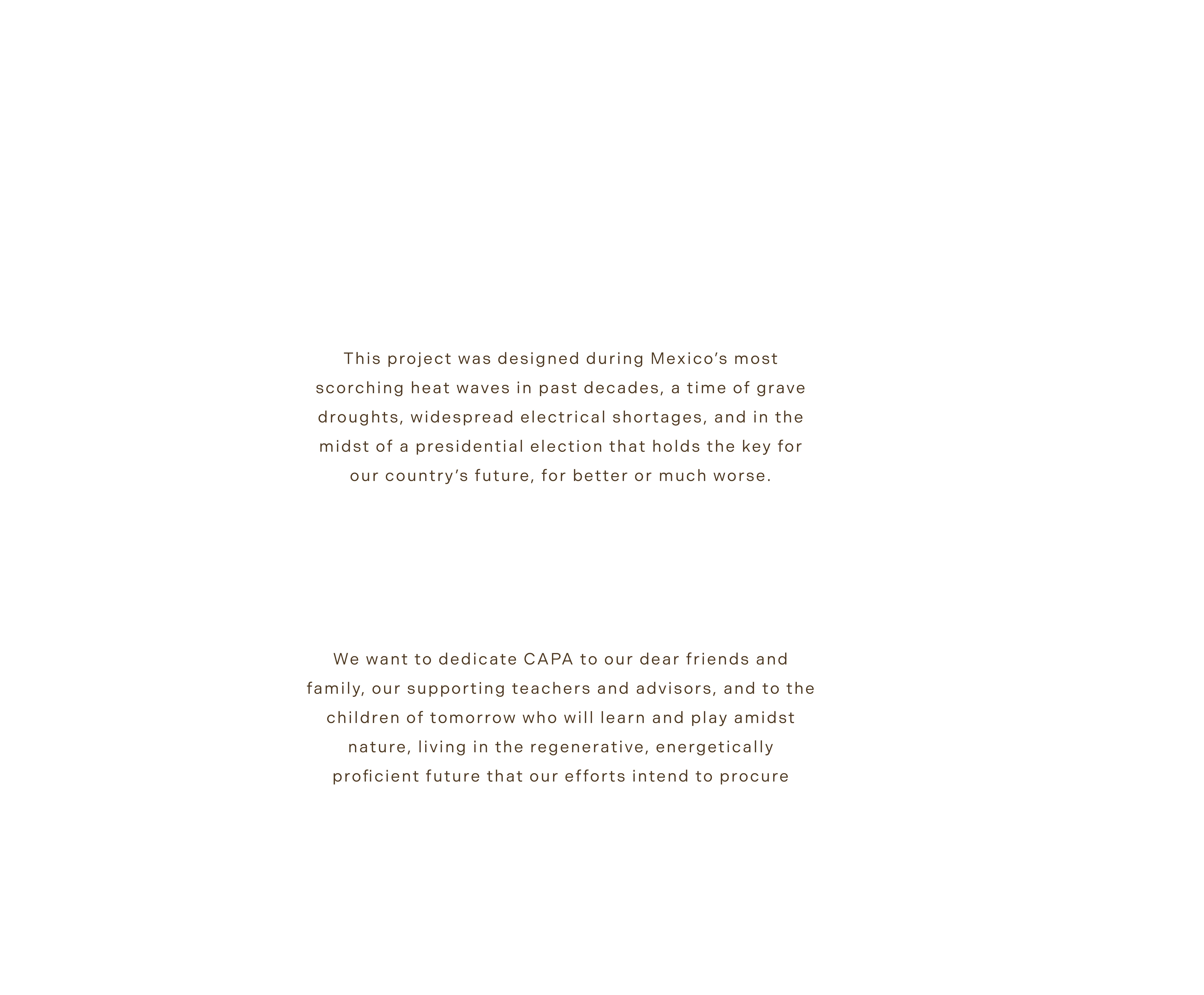CAPA
Centro de Aprendizaje y Producción Ambiental
Part 1




AMIDST A CLIMATE CRISIS ENERGETIC INJUSTICE URBAN AGLOMMERATION AND UNBALANCED CAPITALISTIC POWER SCHEMES...



Centro de Aprendizaje y Producción Ambiental
Part 1




AMIDST A CLIMATE CRISIS ENERGETIC INJUSTICE URBAN AGLOMMERATION AND UNBALANCED CAPITALISTIC POWER SCHEMES...


In 2023, according to the United Nations World Meteorological Organization, the global annual average temperature was nearly 1.5 degrees Celsius above pre-industrial levels
This is due to anthropogenic emissions of greenhouse gases into the atmosphere
The main such gas, carbon dioxide , originates largely from the energy sector
The notion of a linear global transition to net-zero overlooks the complexities of economic development, poverty alleviation, energy security and affordability, which are crucial for the global south
Our country has already repeatedly declared a state of emergency in the electrical system because demand has already caught up with supply and we have been on the verge of severe blackouts
The most important tool to achieve decarbonization is energy transition, which will be a multispeed, multifueled and multi-technology change with different roadmaps and endpoints for different metropolis like CDMX
The energy transition concerns the shift from fossil fuels to renewables energy sources in an effort to reduce CO 2 emissions
C i t i e s c o n s u me78% of the world's energy


Social wellbeing is abundant,

T h e c o s t o f r e n e w a b l e t e c hnologies decreased by 83% T h e sun and wind only produce around 12%




Before Mexico embraced industrialization as an economic vanguard in the mid XX century, the land where Industrial Vallejo stands today was a group of estates and farms property of Antonio Vallejo, located at the far north of Mexico City’s then slowly growing urban sprawl.
In 1934 El Águila, a subsidiary of the Royal Dutch Shell company, opened an oil plant in Azcapotzalco with only a few other neighbor factories. This, along with the massive development of the preexisting railroad paved the way for Vallejo, whose 500 hectares of land use were decreed as exclusively industrial ten years later by president Manuel Ávila Camacho.
Industrial Vallejo grew considerably before the turn of the century due to its concentration of manufacturing enterprises and then the emergence of services for the surrounding neighborhoods.
Today, this site is no longer isolated. The city’s aggressive development has caught up and now engulfs Vallejo with freeways, informal housing and other commerce.
The polygon represents 4.7% of the nation’s manufacturing GDP, with a yearly input akin to 125,000 millions of pesos, harboring several prominent industries. P&G, Cemex, PepsiCo, CocaCola, and LALA among others directly employ 40,000 people but only 5% of them live on-site housing due to a lack of land use diversification. This homogeneous landscape translates into a dehumanized environment.
Towards the end of 2018, the city’s government launched Vallejo-I, a public program whose aim is to attract industries and consolidate the most notable innovation cluster in the Valley of Mexico. This includes an effort to renovate local electrical infrastructure but does not promote ambitious measures towards decarbonization, wasting the potential link to Ciudad Solar, the city’s photovoltaic program.




























